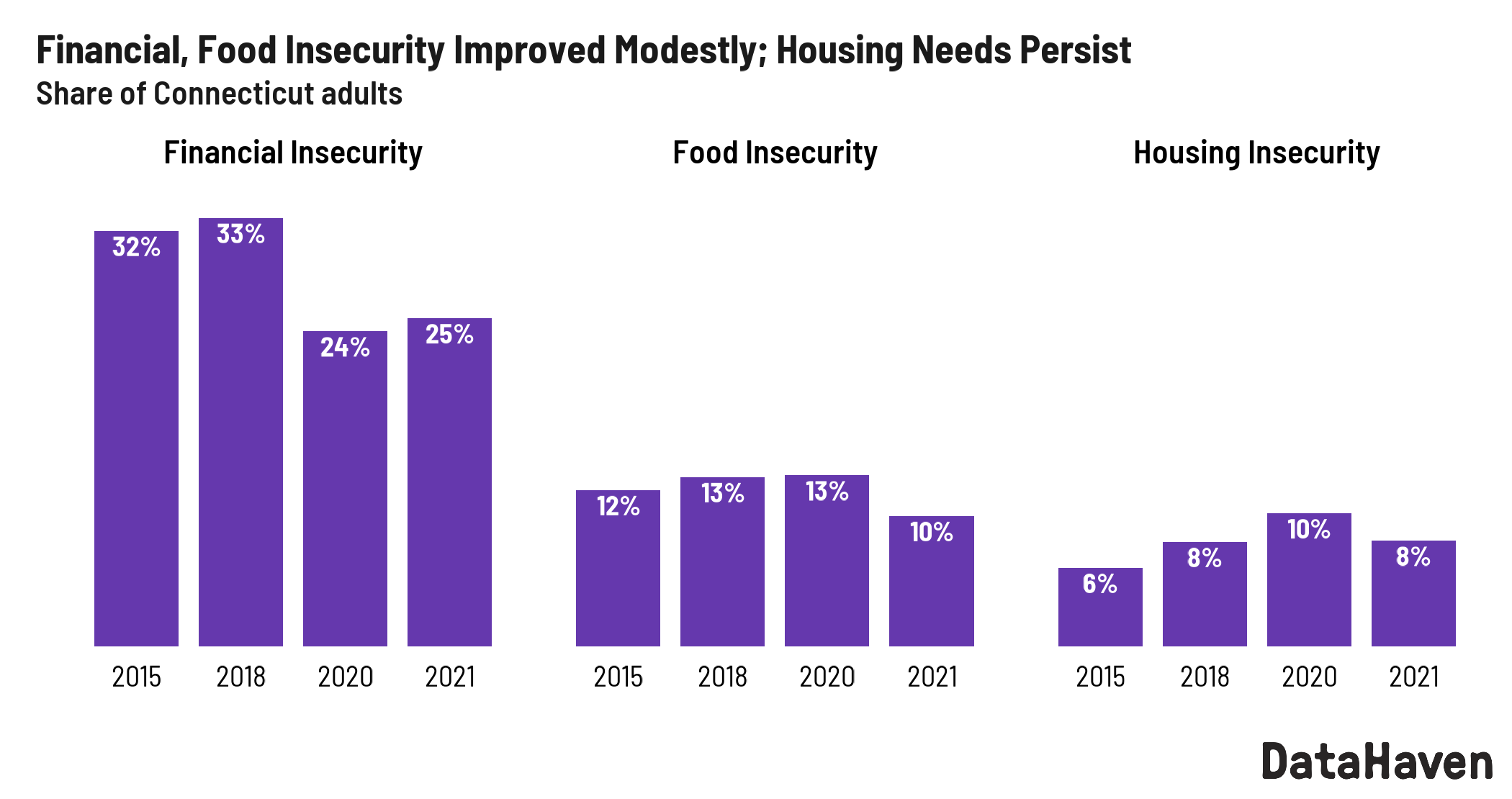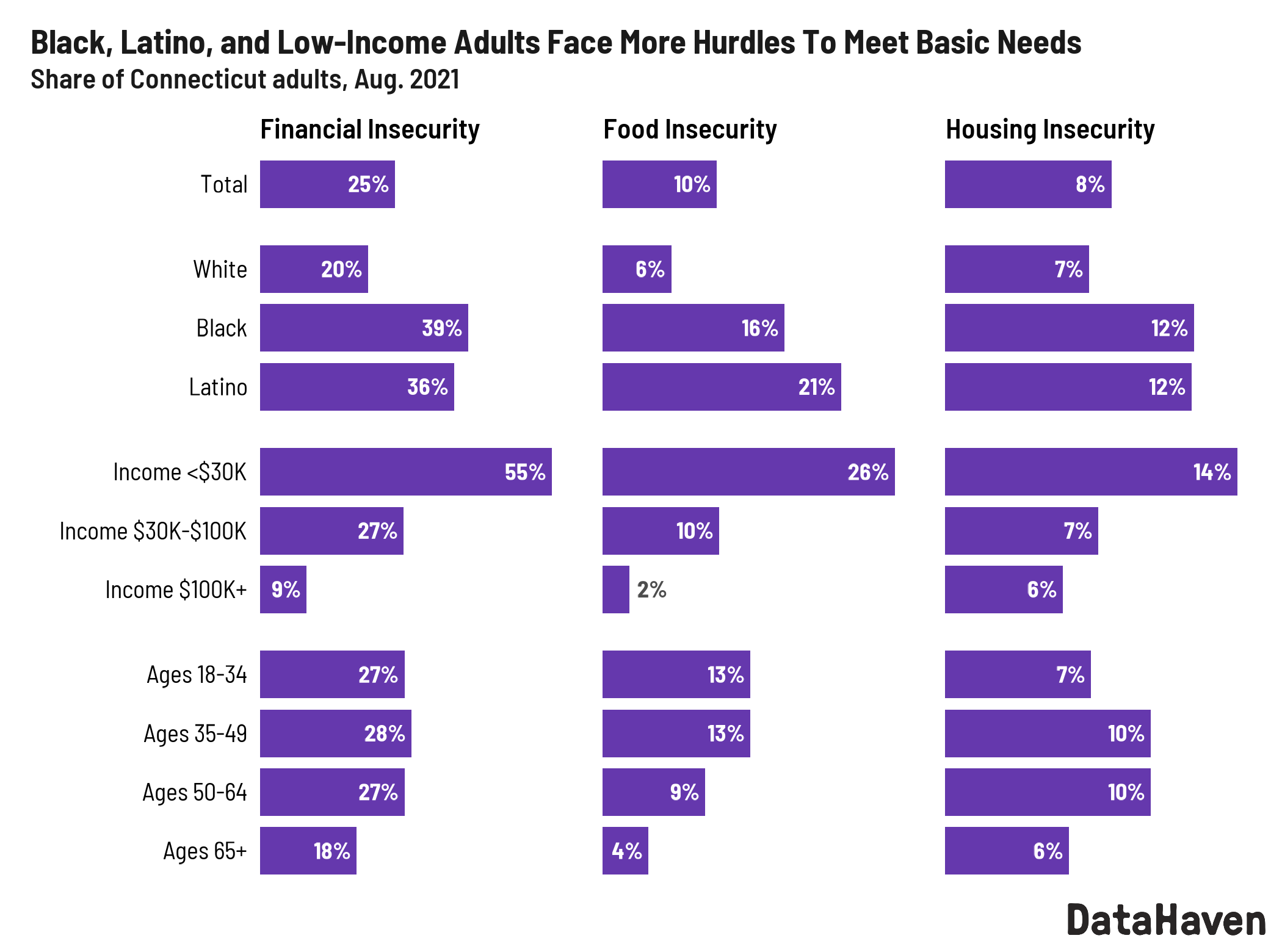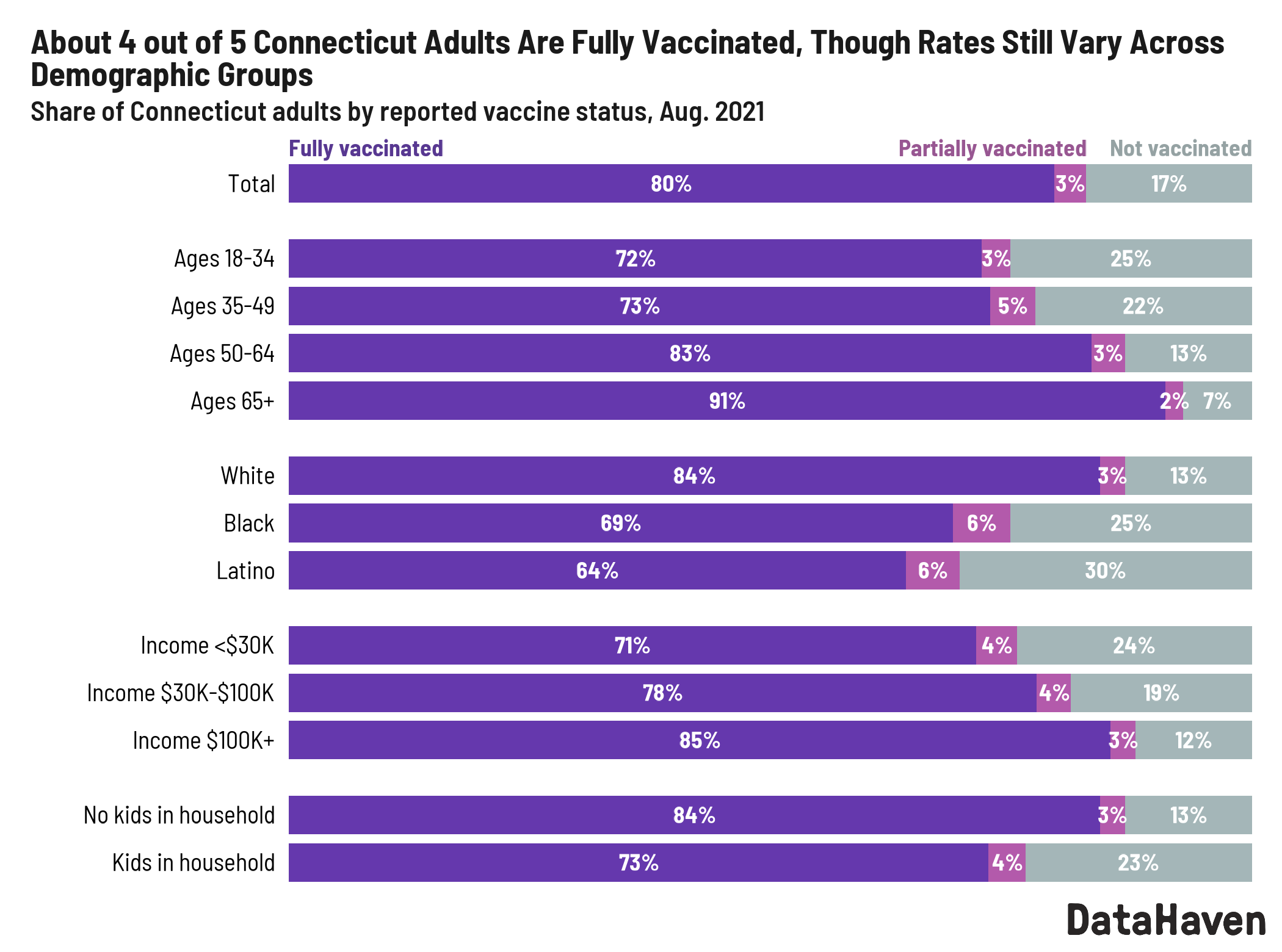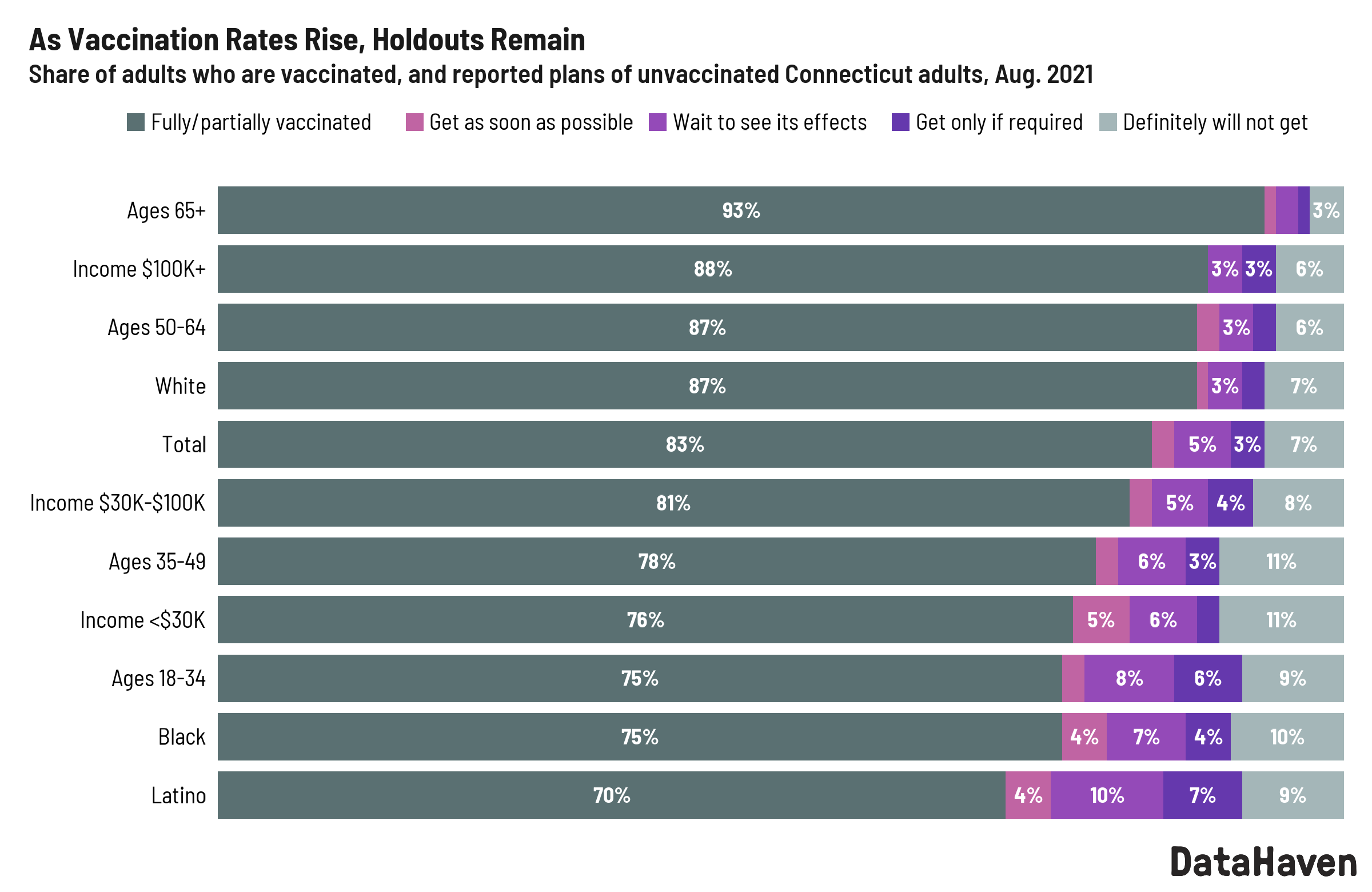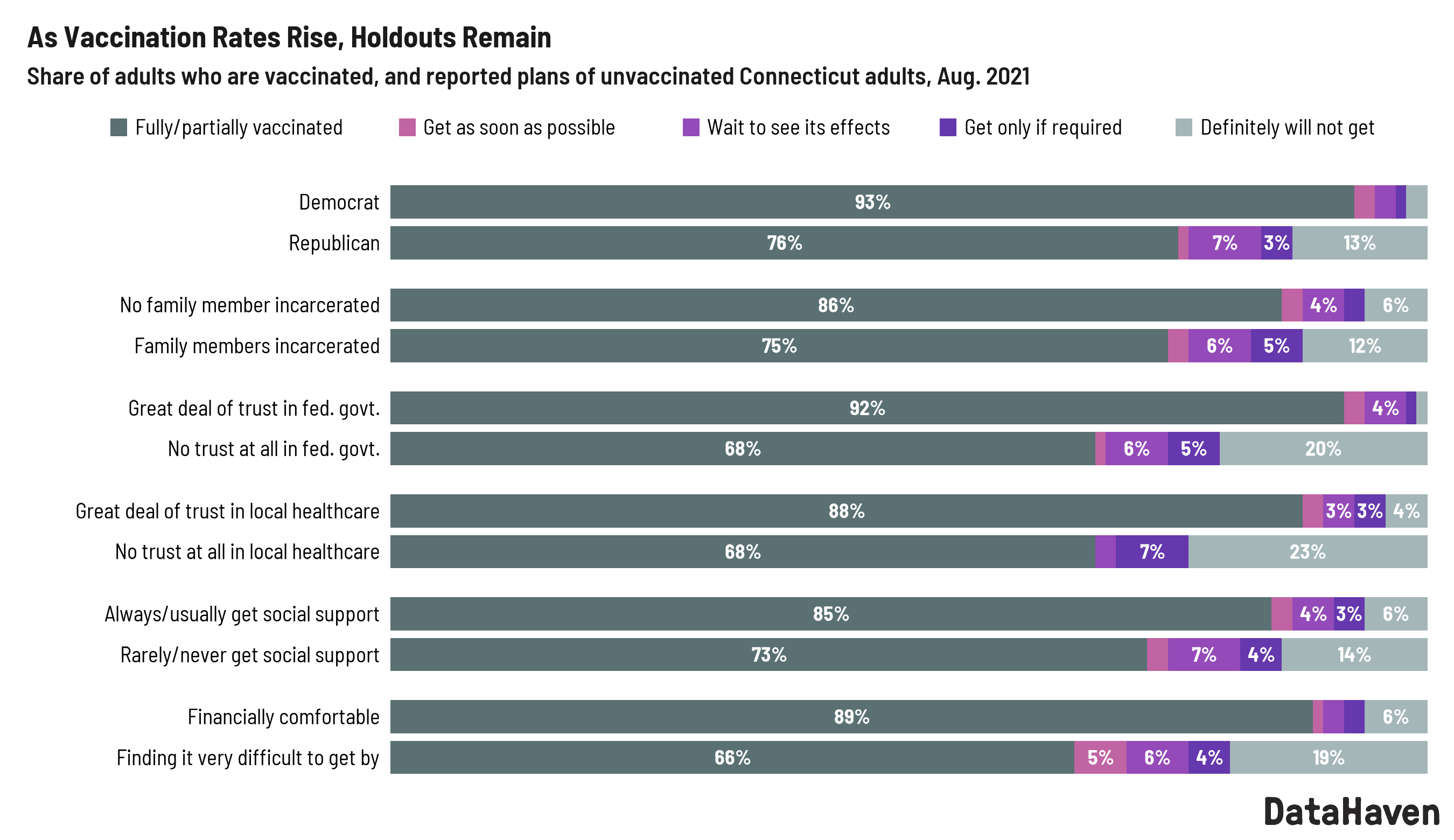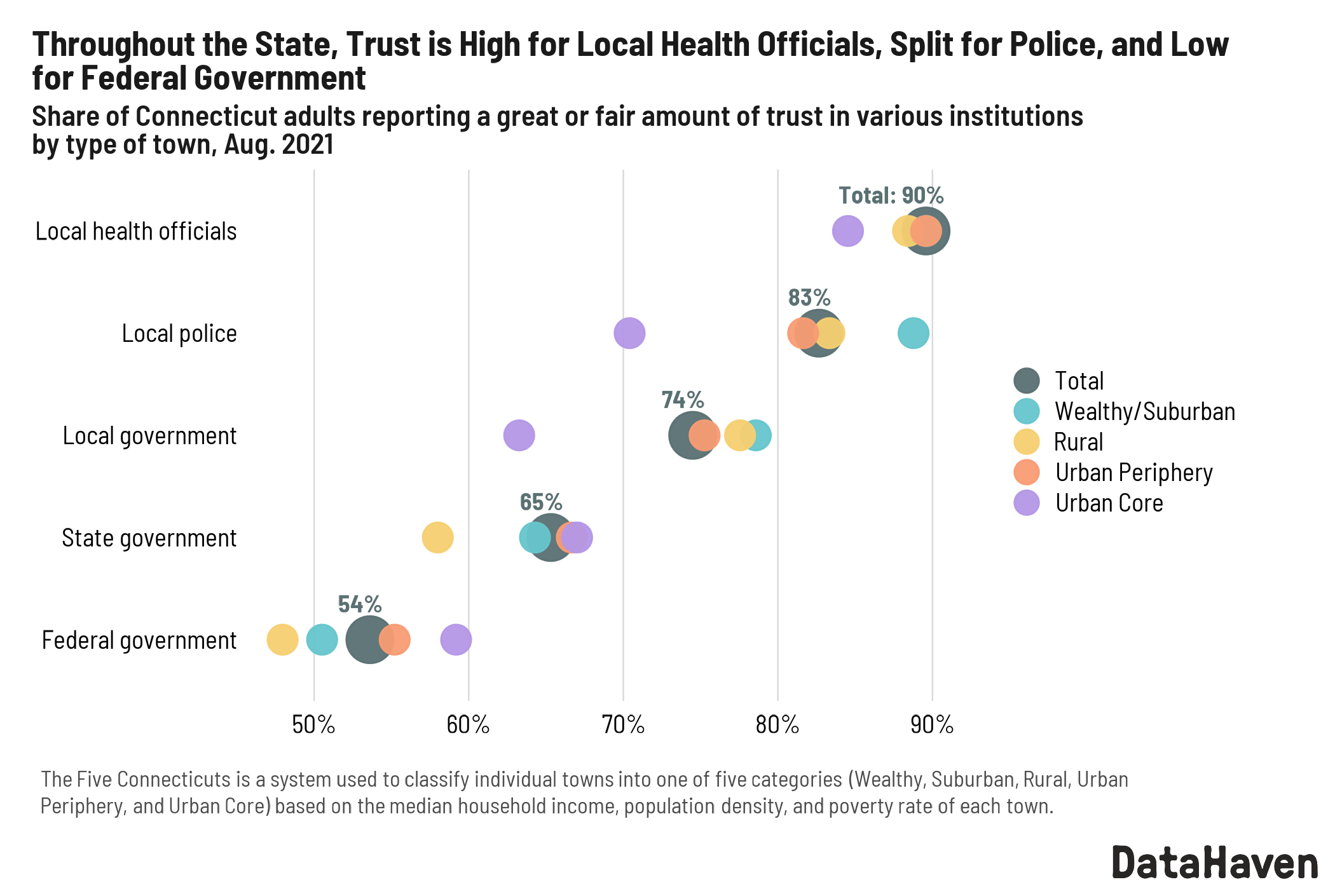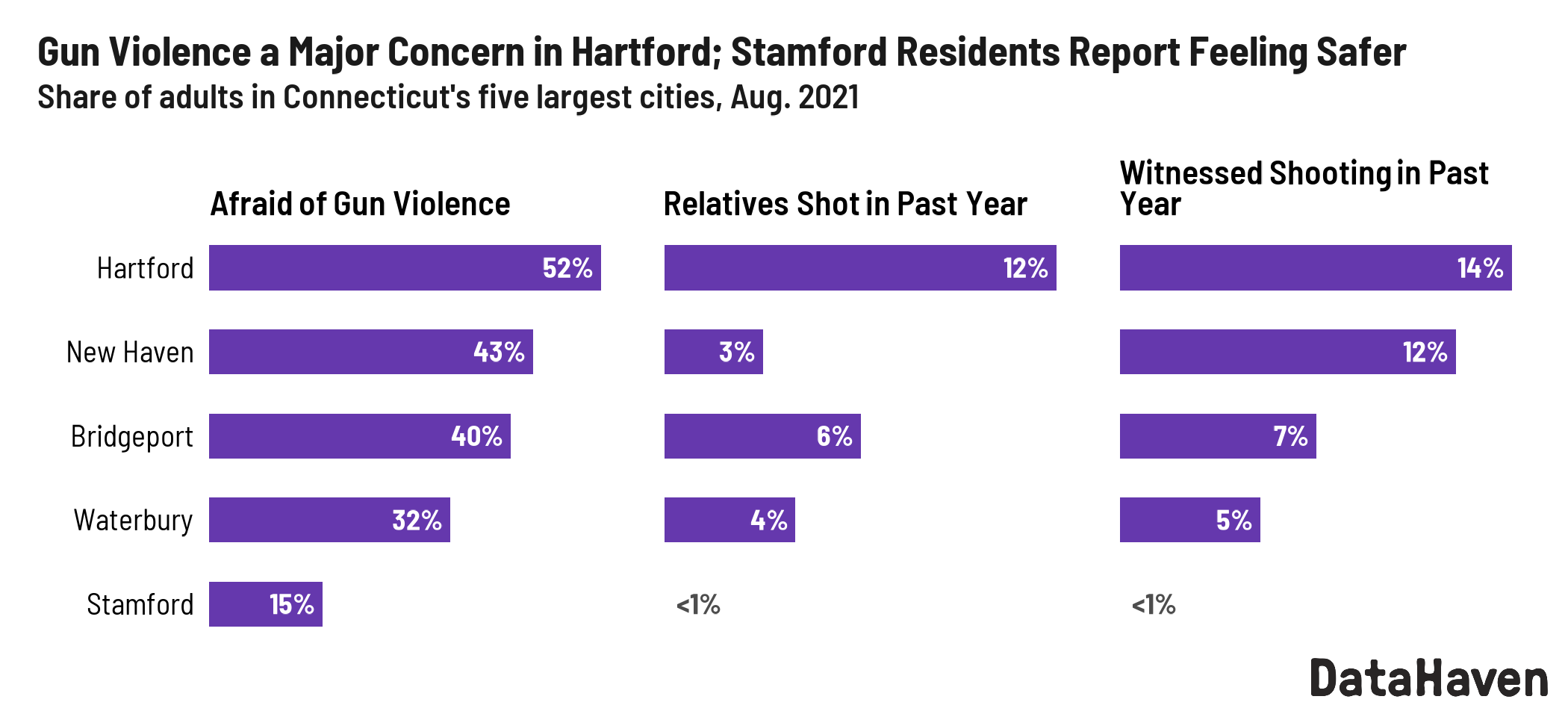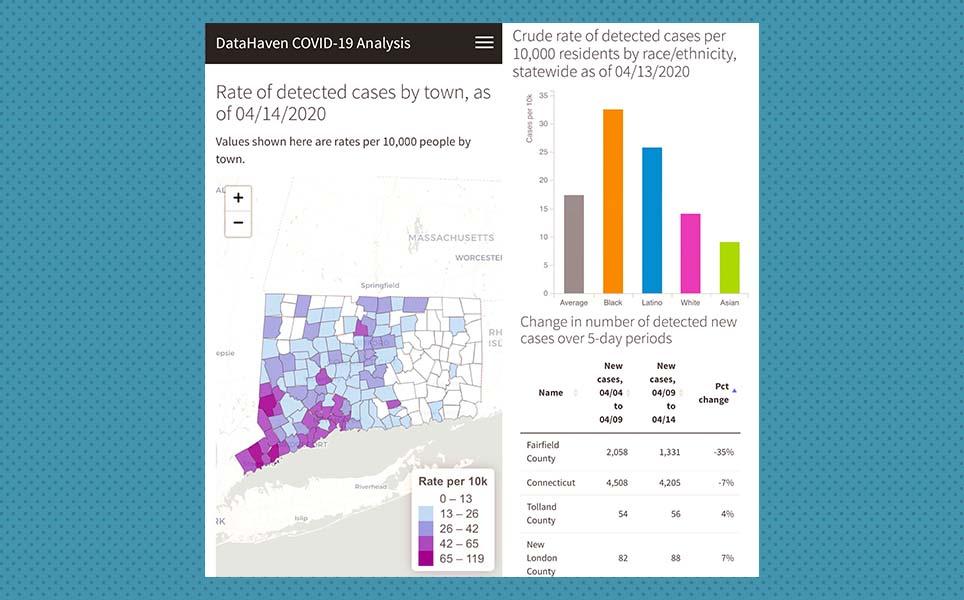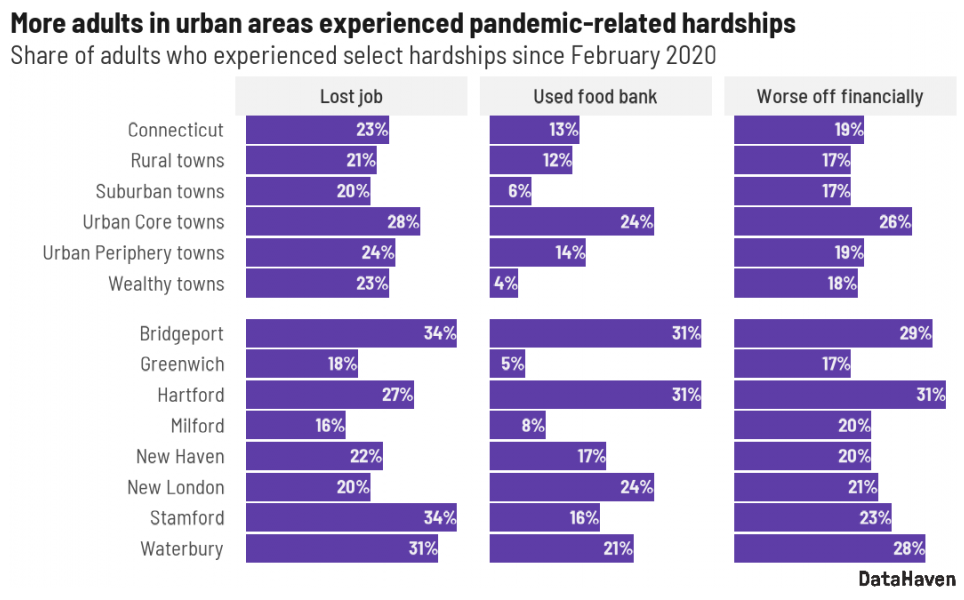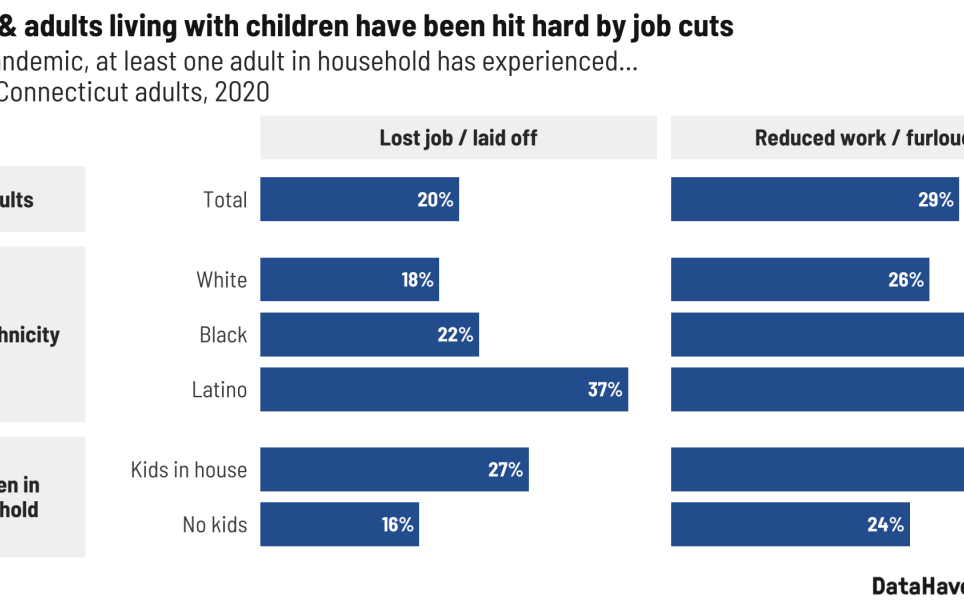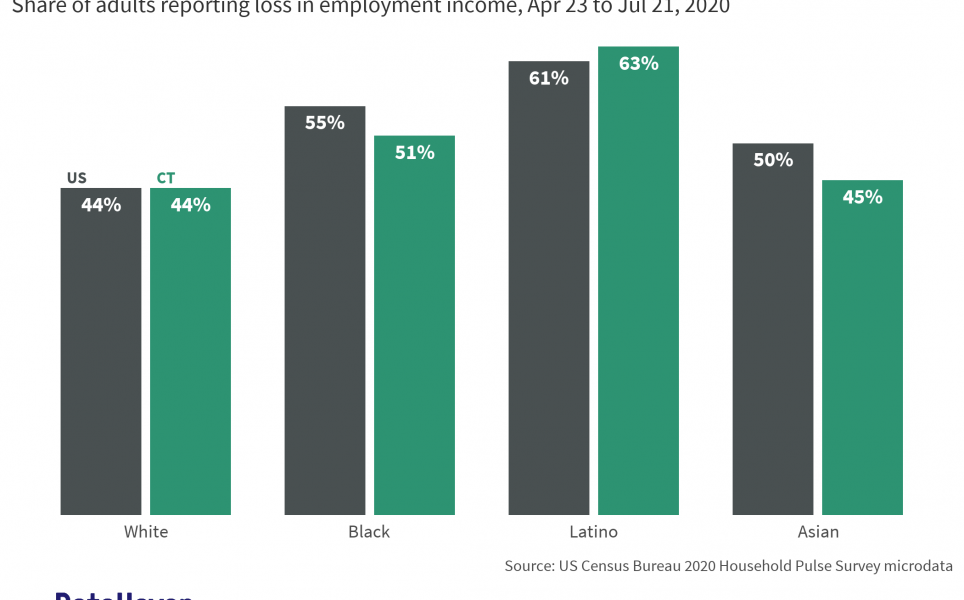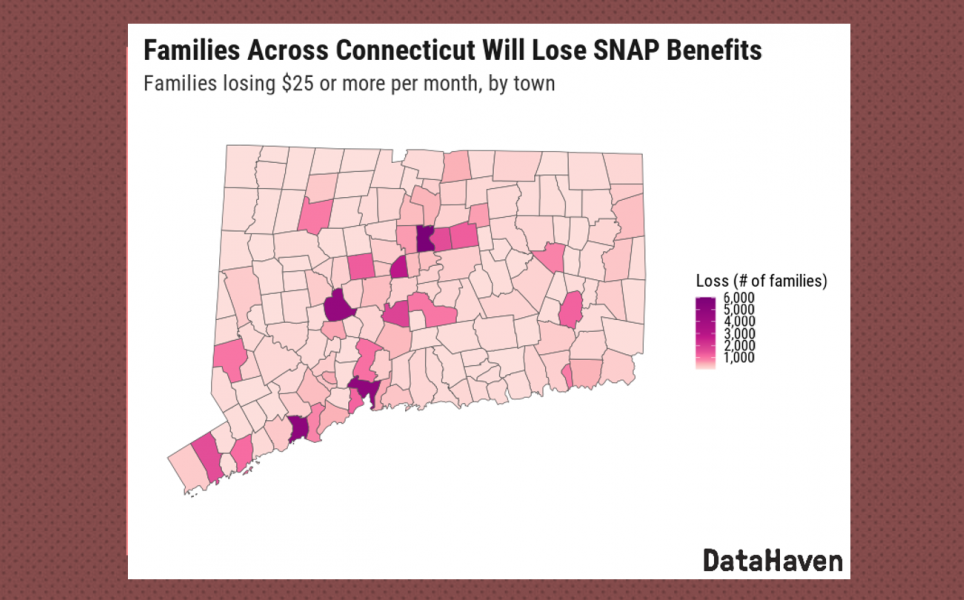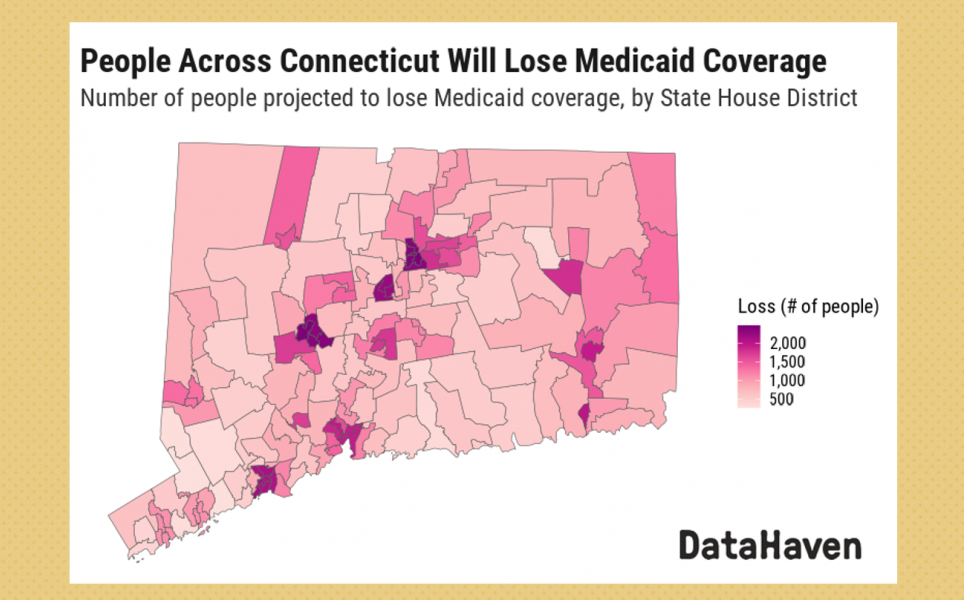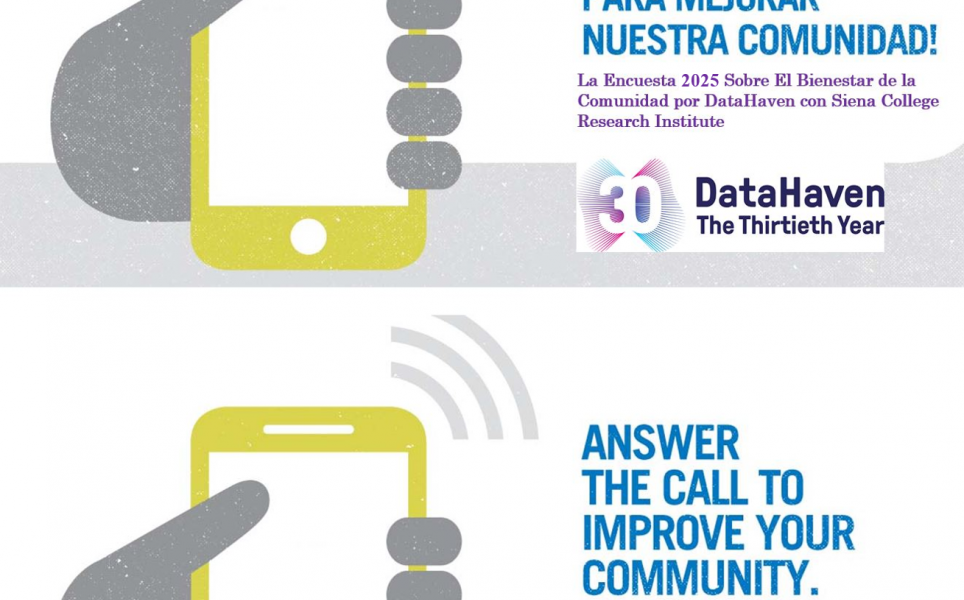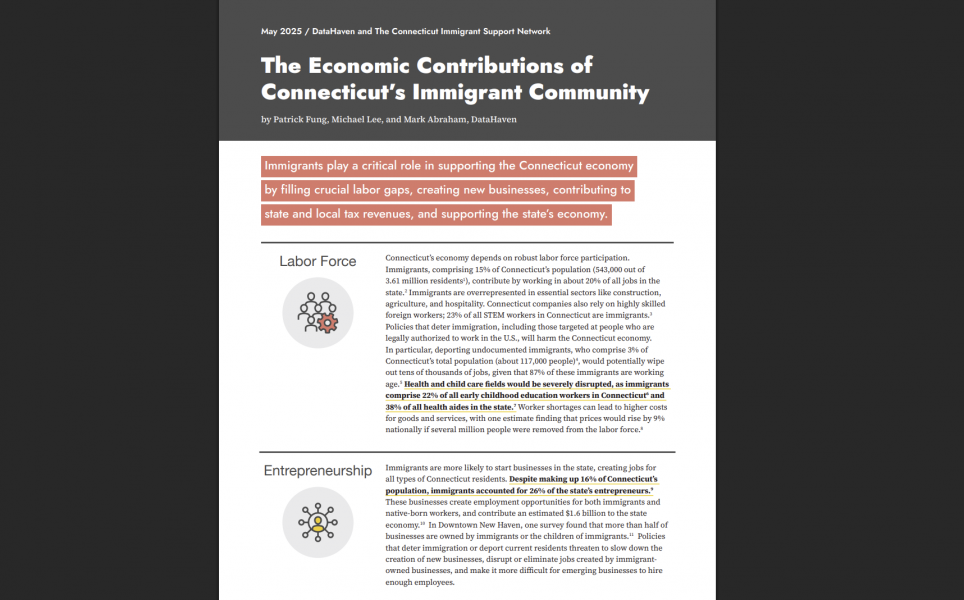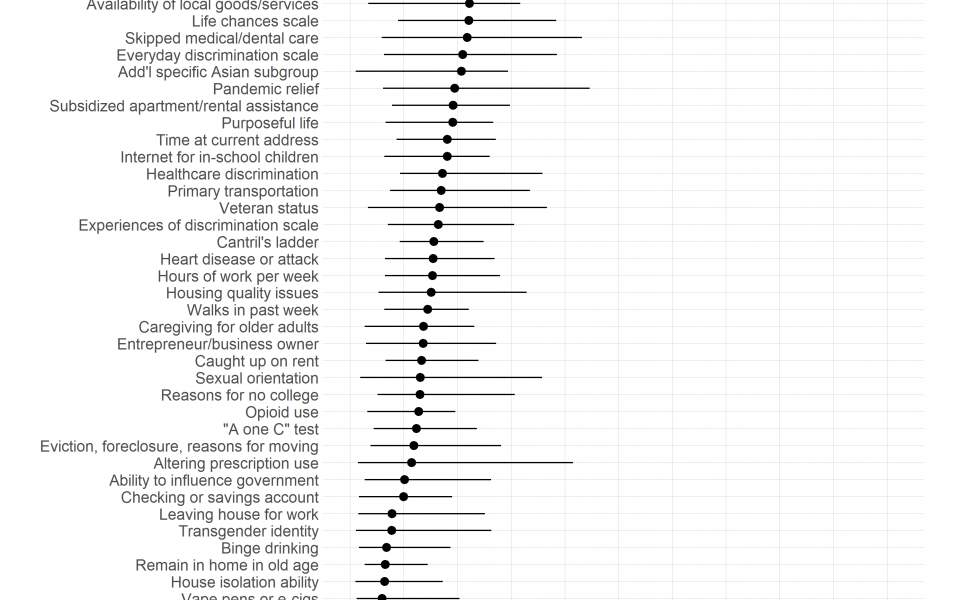Update: The full 2021 dataset, based on over 9,000 interviews conducted through the end of 2021, is discussed in a February 2022 data release.
PDF version of October 2021 press release, which was based on the initial 5,145 interviews conducted from June to August of 2021:
Data: Statewide crosstabs with preliminary survey results from Summer 2021 (detailed results from the survey's first 5,145 interviews)
October 2021 Press Release
About the DataHaven Community Wellbeing Survey
Like previous surveys in 2012, 2015, 2018, and 2020, the 2021 DataHaven Community Wellbeing Survey creates reliable information on well-being and quality of life in every Connecticut town. Supported by more than 80 public and private partners throughout the state, the fifth wave of the survey is conducting thousands of interviews of randomly-selected adults in every town throughout 2021.
Below is a summary of just a few findings from 5,145 interviews conducted from June through August 2021, as well as trends from before and during the COVID-19 pandemic. More details are available in the survey crosstabs. All interviews in this dataset are based on live calls in English and Spanish to randomly-selected landline and cell phone numbers by survey-takers based at the Siena College Research Institute. The overall survey carries a maximum margin of error of +/- 1.6%. To ensure that results are an accurate representation of the entire adult population, all results are weighted by age, gender, race/ethnicity, and geography.
Survey of 5,145 randomly-selected Connecticut adults in Summer 2021 reveals improvements in financial well-being, changes in mask-wearing and vaccination rates, concerns about gun violence during the pandemic
Residents’ financial and food security have improved, while housing remains more costly than some can afford
Since 2015, the DataHaven Community Wellbeing Survey has asked questions regarding households’ basic economic needs. Overall since 2015, financial insecurity (reporting financial difficulty or just getting by), and food insecurity (the inability to pay for food at some point in the past 12 months) have improved, while housing insecurity (the inability to pay for housing at some point in the past 12 months) has increased.
The improvement in financial and food insecurity from 2018 to 2020 may be partly explained by federal stimulus payments and the expansion of unemployment benefits due to the coronavirus pandemic. Nevertheless, 1 of every 4 Connecticut adults report facing financial difficulty, and 1 in 10 report being unable to afford food.
Housing insecurity registered an uptick in 2020, and has grown overall since 2015, suggesting that housing costs remain out of step with families’ abilities to pay.
Despite these improvements, disparities persist between groups. Black, Latino, and low-income adults still struggle to meet basic needs. Food insecurity affects 1 in 4 adults earning less than $30,000 per year, and would likely be higher if not for the expansion of food assistance programs aimed at very low income households. Similarly, Latino adults statewide are 3.5 times more likely to be affected by food insecurity than white adults. While 12 percent of adults statewide reported visiting a food pantry in the past year, that rate was 25 percent for Black adults, 22 percent for Latino adults, and 7 percent for white adults.
Housing insecurity affects 1 in 7 low-income adults, and 1 in 8 Black and Latino adults. While the state continues to confront widespread housing affordability issues, housing insecure families often have compound economic needs worsened by coronavirus pandemic. Outcomes for these families may be worsened by the sunset of local and statewide eviction moratoria.
Nearly a quarter (24 percent) of Connecticut adults reported losing a job in the past year. However, underemployment (adults who are out of work, or wish to work more than they are scheduled) has fallen back to the pre-pandemic level of 13 percent. While 60 percent of adults statewide believe there is suitable employment in their areas, fewer than half of Black and Latino adults (48 and 46 percent, respectively) believe there are options for suitable employment nearby.
Pandemic-era precautions differ between groups, pandemic changed how most interact with health care providers
About 60 percent of adults report being in very good or excellent health in 2021, with no notable increase or decrease due to the coronavirus pandemic. However, the ways in which people interact with healthcare professionals have changed since 2020, particularly with the expansion of telehealth services and changes to seeking routine medical and dental care.
In 2021, 22 percent of adults reported visiting the emergency room, down from 26 percent in 2018. Similarly, 71 percent of adults said they had a dental visit in the past year, down from 74 percent in 2018. In 2021, 51 percent of adults reported using telehealth services at some point in the past year.
The survey also reveals disparities related to health care access. Latino and low-income adults are less likely to have health insurance, and more likely to skip or postpone necessary medical care. Lack of health insurance usually means an individual has no regular doctor or trusted health care establishment, and instead skips medical or dental care when needed. Uninsured people may also be less willing to receive the covid-19 vaccine for fear of side effects requiring medical care.
While mask wearing in 2021 is down from the levels reported in 2020, expert guidance suggests that masks remain an effective way to protect oneself from and prevent the spread of COVID-19, for both vaccinated and unvaccinated individuals. However, masking continues to be inconsistent between groups, with men now much less likely than women to routinely put on a mask when outside the home. Those who are more likely to wear a mask are Black and Latino adults, low-income earners, and women—groups who are also overrepresented in essential jobs with greater exposure to the virus.
Data show opportunities to increase vaccination rates, especially among young adults and in Black and Latino communities
From June to August 2021, 80 percent of Connecticut adults reported being fully vaccinated. Vaccination rates vary by age, race/ethnicity, income, and political affiliation, among other factors. Statewide, 3 percent of adults reported they were partially vaccinated and 17 percent said they were not vaccinated. Vaccination rates rose by a few percentage points from June to August, so these estimates should be considered an average of the summer months.
Among those who are not vaccinated, 44 percent reported that they definitely will not get the vaccine, but this rate was significantly lower among unvaccinated Black, Latino, and younger adults. In Connecticut, 38 percent of unvaccinated Black adults, 28 percent of unvaccinated Latino adults, and 35 percent of unvaccinated young adults (age 18 to 34) said they would definitely not get the vaccine. Another 18 percent of all adults who are unvaccinated said they would only get it if it were required for school or work. Vaccine mandates have since been announced for workers in local and state governments, school districts, and hospitals across the state.
Another 27 percent of unvaccinated adults wanted to wait and see how the vaccine affects other people before deciding to get it, and 11 percent said they would get it as soon as possible. In Latino and Black communities, unvaccinated adults were more likely than white adults to say they would wait to see its effects, and also more likely to say they would get the vaccine as soon as possible (17 percent and 15 percent, respectively, compared to 8 percent among of unvaccinated white adults). These data suggest an opportunity to continue to boost vaccination rates within Black and Latino communities, and among young adults, through effective outreach and access. Notably, 19 percent of low-income adults who are unvaccinated say they would get the vaccine as soon as possible (compared to 2 percent of unvaccinated high-income adults), suggesting that adults with limited income may need assistance to locate and schedule vaccinations, or to answer questions about cost (vaccines are free of charge).
Trust in institutions varies; gun violence a significant concern in Connecticut’s large cities
The DataHaven survey finds that health officials are among the most trusted institutions throughout the state, while the federal government is the least trusted. Notably, trust in the federal government has improved from 44 percent in 2020 to 54 percent in 2021, a change that may relate to the 2020 presidential election. Trust in state government has declined slightly from 72 percent in 2020 to 65 percent in 2021, and is lower in rural areas than in other parts of the state. Overall, trust in local police and local government have held steady from 2020 to 2021, but remain significantly lower in urban areas.
Although property crime has continued to fall, violent crime has risen in most cities during the pandemic. Nationally, 77 percent of reported murders in 2020 were committed with a firearm. To use a local example, in New Haven in 2020, 120 people were shot, 20 were killed, and 274 shots fired were confirmed, marking dramatic increases from 2019, in line with trends observed in most cities throughout the United States. To understand how individuals perceive this increase, the 2021 Community Wellbeing Survey asked respondents from each of Connecticut’s largest cities a series of questions relating to gun violence in their neighborhood. Residents of Hartford reported the highest fear of gun violence (52 percent), as well as the highest shares of respondents who had a relative shot or killed (12 percent), or who had witnessed a shooting in the past year (14 percent). In contrast, adults in Stamford, where median household incomes are two to three times higher than those of Connecticut’s other large cities, reported far fewer concerns.
The 2021 DataHaven Community Wellbeing Survey will continue to interview randomly-selected adults throughout the year. Additional findings will be forthcoming, including results from focus groups and longer interviews with some of the selected participants. For more information, see https://ctdatahaven.org/reports/datahaven-community-wellbeing-survey.
Contact Information
Mark Abraham, Executive Director, DataHaven, info (at) ctdatahaven.org




